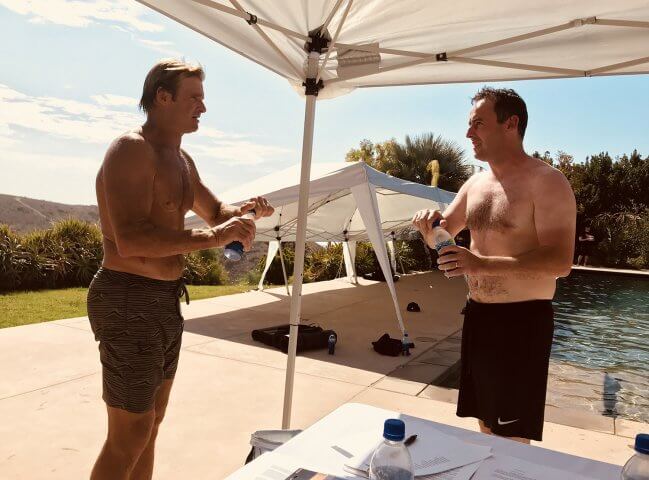Not Hitting Your Performance Goals? Mouth Breathing Might Be the Roadblock
How frustrating is it when you have a good coach, push yourself in your training, and dial in your recovery, only to continually fall short of your aims on game day? When this happens, it’s easy to question what you could’ve done better, how much harder you could’ve worked, or whether you simply choked under pressure.
These are legitimate questions, but the answers we typically come up with can be way off. “I just needed more sets, reps, or weight.” Or, the self-defeating judgements—“I guess I’m just mentally weak.”
Rather than needing to do more, there’s actually a fair chance you need to do less of something—less chronic stress, less red-lining and, perhaps most significantly, less mouth breathing during exercise. That’s right. The real reason for you coming up short again might be as simple as the fact that you’re locked in a dysfunctional breathing pattern. You probably don’t even know it!
Think About Breathing
One possible cause is that breathing is autonomous—we do it subconsciously because it’s the most crucial factor in our survival as human beings. But this also has a pitfall, in that because it happens automatically, we don’t think about it.
“We can develop faulty breathing patterns that compromise our day-to-day state, our physical and cognitive performance, and our recovery, without even realizing it,” said Patrick McKeown, XPT Advisor, Buteyko breathing expert, and author of The Oxygen Advantage.
Sometimes, a more progressive coach will ask you to focus on breath and teach you how to breathe during a workout. This can help you stabilize your torso in power/strength exercises like deadlifts and squats, maintain a solid tempo in rhythmical movements like kettlebell swings, and boost your endurance in aerobic activities such as cycling, rowing, and running. Best case scenario, you transfer this newfound breath awareness to the other 23 hours in your day. But many people don’t—they go right back to letting breathing just happen outside the gym.
This means that when you’re not training, you’re likely lapsing into breathing through your mouth. We can also consider this to be stress breathing, as taking in big gulps of air signals to your autonomic nervous system that it needs to click into and stay in a mode of heightened vigilance. This, in turn, can create excess tension in your soft tissues (that aching neck and upper back you’d love somebody to rub), which is exacerbated when we’re asking other muscles to take over the role of respiratory mechanics from the diaphragm we cut out of the equation when we breathe through our mouths.
The higher frequency of mouth breathing sends additional stress signals to the brain. No wonder you feel cooked at the end of a long day and find it hard to truly relax!
“If you don’t have a coach who emphasizes breath control and awareness, the bad habits you form during day-to-day activities are likely exaggerated when you’re pushing yourself to the max physically,” McKeown said.
If so, you’re gulping in more oxygen than your body can possibly process, not blowing off sufficient carbon dioxide, and asking those secondary respiratory muscles to contract faster and harder for longer. This is one of the primary reasons people fall apart on a long run or ride. We often attribute lacking the energy to continue to “bonking”—a depletion of glucose. And yet in reality, many such incidents are either caused by or attributed to dysfunctional mouth breathing during exercise.
If your muscles aren’t getting sufficient oxygen and cycling out enough CO2, you will not have enough energy. Let’s not forget that breath is the other way that we fuel performance at the cellular level.

Patrick McKeown’s Tips for Replacing Mouth Breathing with Nasal Breaths
With all this said, what are you supposed to do about it? What is the correct way to breathe when exercising? While you might be tempted to go right for what you think matters most—training and competition—you’d be better off beginning with how you breathe when just going through everyday life. Here are five steps McKeown recommends to retool your breathing pattern:
While it might sound simple, keeping your lips together when you’re not talking, drinking, or laughing can make a big difference.
Next, try to hold your tongue against the roof of your mouth so you’re not blocking the airway.
Try to take slow, shallow nasal inhales and exhales from your diaphragm that almost seem nonchalant.
Then, reduce how often you breathe.
Finally, always keep your breathing under control, particularly when you start to feel panicked or stressed out. As your breath is always with you and available, it gives you a way to modulate your response to any circumstance. All it takes to calm down is a few nasal inhales and exhales.
In the next installment of this series, we’ll move on to exploring the significance of how you breathe at night, and give you some tips to enhance your sleep quality, reduce evening stress, and make you feel more fully rested upon waking. Until then, breathe easy (and through your nose!).
